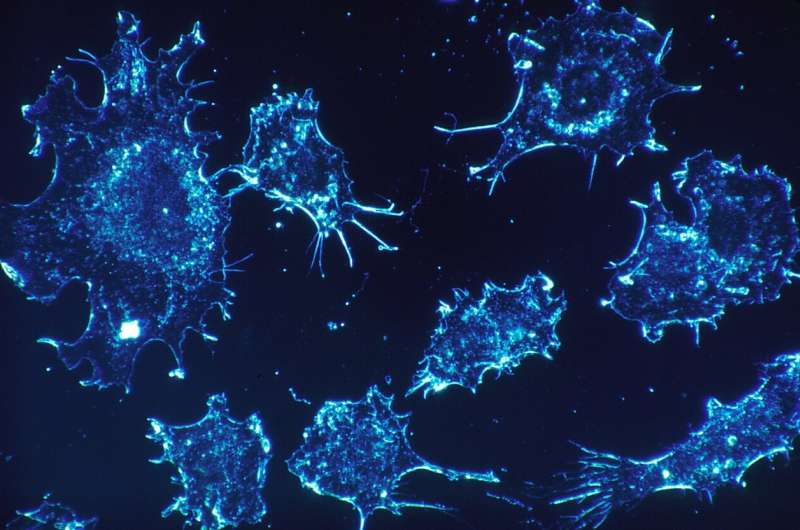Credit: CC0 Public Domain
Researchers from the Department of Cellular Biology at the University of Seville and the Seville Institute of Biomedicine (IBiS), Pablo Vicente and Doctor Luisma Escudero, in close collaboration with the researcher Rebecca Burgos and other members of the group of Doctor Rosa Noguera (University of Valencia—INCLIVA, CIBERONC) have published a study aimed at developing new therapies to fight childhood cancer.
This project means a step forward in the basic aspect of the study of cancer that could open new avenues of research to help understand what makes a tumour more or less aggressive and how they can be fought. However, the researchers stress that their finding does not in itself mean a cure for cancer.
Neuroblastoma is a type of cancer that originates during the development of the nervous system. It mainly affects children less than 18 months old. It is the most common solid tumour in early childhood and despite the great improvements made in the cure rate for other childhood tumours, the survival rate for patients with neuroblastoma is much less satisfactory.
There is clear evidence that the location where the tumour is and what supports it (the extracellular matrix), plays an important role in the initial growth and development of the tumour. This setting is formed by a network of fibres and fibrils, which, depending on their density and how they are connected, give more or less rigidity to this tumorous micro-environment.
Therefore, it is important to understand how tumour cells are related to the extracellular matrix and how the fibres and fibrils are organised. This is not easy. To achieve this, the researchers have combined in this study the analysis of images of biopsy samples of tumours from patients affected by neuroblastoma, with new mathematical procedures (graph theory) that have allowed them to describe how the vitronectin fibrils are organised. The conclusion of this complex study is quite a lot simpler. The degree of organisation of the vitronectin correlates with the aggressiveness of the tumour and could be used to classify patients before any potential treatment.
The results obtained suggest that vitronectin can change the rigidity of the location of the tumorous cells. In the most serious cases, vitronectin could guide the cancerous neuroblasts making it possible for them to invade other organs. That is to say, the changes caused by specific organisation of vitronectin can form "pathways" that could help the tumour to migrate, with the grave problems that this would cause. For this reason, this "basic science" study opens a possible new way of combatting this cancer which could be based in modifying the organisation of the vitronectin, thus making tumours less aggressive.
More information: Pablo Vicente‐Munuera et al, The topology of Vitronectin: a complementary feature for neuroblastoma risk classification based on computer‐aided detection, International Journal of Cancer (2019). DOI: 10.1002/ijc.32495
Journal information: International Journal of Cancer
Provided by University of Seville




















